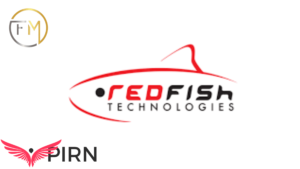Introduction
Redfish Technology is a new and innovative standard designed to help businesses manage their data centers and IT infrastructure more efficiently. It is an open, scalable, and secure platform that allows users to manage and monitor their servers, storage devices, and networking systems. The Redfish standard is gaining momentum in the tech world due to its simplicity, security, and flexibility, making it a go-to solution for IT administrators and businesses worldwide.
In this article, we will explore Redfish Technology in-depth, discuss its features, benefits, applications, and how it is revolutionizing server management. We will also cover its key role in data centers and cloud computing and answer frequently asked questions about Redfish Technology.
What is Redfish Technology?
Redfish Technology is an open-source hardware management standard that provides an easy and secure way to manage server hardware, including servers, storage systems, and networking devices. Redfish provides a RESTful API-based solution that enables administrators to configure, monitor, and diagnose hardware management tasks.
Developed by the Distributed Management Task Force (DMTF), Redfish aims to replace older management protocols like IPMI (Intelligent Platform Management Interface) and provide a more modern and efficient alternative. Redfish works seamlessly across various hardware vendors, providing a universal solution for server management.
Key Features of Redfish Technology
- RESTful APIs: Redfish uses RESTful APIs to provide a flexible, easy-to-use interface for hardware management.
- JSON-Based: The Redfish protocol uses JSON (JavaScript Object Notation) for data formatting, making it lightweight and easy to parse.
- Scalability: Redfish scales from small systems to large data centers, supporting various hardware configurations and workloads.
- Security: Redfish incorporates security features such as secure communications (HTTPS) and user authentication to ensure that only authorized users can access and manage hardware systems.
- Interoperability: Redfish works across hardware from different vendors, providing a unified approach to server management.
How Does Redfish Technology Work?
Redfish Technology simplifies the management of complex IT infrastructure. The core functionality of Redfish involves managing hardware components, monitoring their health, and automating tasks. Here’s how it works:
- Hardware Discovery: Redfish allows administrators to discover all available hardware within a system. This includes servers, storage systems, networking equipment, and more.
- Configuration and Setup: Redfish provides tools for configuring hardware components, including BIOS settings, firmware updates, and power management.
- Health Monitoring: Redfish enables continuous monitoring of hardware health, including temperature, power status, fan speeds, and other critical metrics.
- Remote Management: Redfish supports remote management capabilities, allowing IT administrators to perform maintenance tasks without being physically present at the data center.
- Automation: With Redfish, administrators can automate repetitive tasks, such as provisioning new servers, updating firmware, and configuring network settings.
Redfish Technology builds on HTTP and uses RESTful APIs, making it easy for businesses to integrate into their existing IT environments. The use of JSON allows for simple and clear communication between different systems and software applications.
Benefits of Redfish Technology
Redfish Technology offers numerous benefits for businesses, data centers, and IT professionals. Some of the key advantages include:
1. Increased Efficiency
Redfish improves operational efficiency by automating routine tasks such as hardware configuration, monitoring, and firmware updates. It enables remote management of servers and other hardware components, saving time and resources.
2. Simplified Management
Redfish provides a simple and unified interface for managing hardware systems. This eliminates the need to use multiple proprietary tools for different hardware vendors. Administrators can control everything from a single platform, reducing complexity and improving productivity.
3. Security
With the increasing importance of data security, Redfish incorporates robust security measures, such as encrypted communications and access controls. These features ensure that hardware management tasks are secure and that unauthorized users cannot gain access to sensitive information.
4. Interoperability
Since Redfish is an open standard, it is vendor-agnostic and can work with hardware from various manufacturers. This allows businesses to mix and match different hardware components without worrying about compatibility issues.
5. Scalability
Redfish scales from small IT environments to large data centers, making it a flexible solution for businesses of all sizes. It supports complex hardware configurations and is capable of handling high-performance workloads.
Applications of Redfish Technology
Redfish Technology is being used in various industries and IT applications. Some of the most common applications of Redfish Technology include:
1. Data Center Management
Data centers are the backbone of modern computing, and Redfish plays a critical role in ensuring that these centers run efficiently. With Redfish, data center administrators can manage thousands of servers and other hardware devices from a central platform, making it easier to monitor performance, manage resources, and ensure uptime.
2. Cloud Computing
Redfish is an essential tool for cloud service providers who need to manage large-scale server infrastructures. Cloud computing environments rely heavily on automation and remote management, which are key features of Redfish Technology. It helps cloud providers maintain high levels of availability, performance, and security across their platforms.
3. Server Management
Redfish is widely used for managing server hardware. It allows administrators to configure servers, perform health checks, and automate tasks such as firmware updates and power management. This makes it a powerful tool for server management in large organizations.
4. Storage Management
In addition to server management, Redfish can also be used to manage storage devices such as hard drives, SSDs, and storage arrays. By integrating Redfish into storage management workflows, businesses can ensure that their storage systems are always running at peak efficiency.
5. Network Management
Redfish supports management of networking hardware such as switches, routers, and firewalls. This is particularly useful for companies that rely on complex network configurations and need a centralized platform for monitoring and managing their network infrastructure.
Redfish Technology vs. IPMI
Before Redfish Technology, IT administrators used a protocol called IPMI (Intelligent Platform Management Interface) for most hardware management tasks. While IPMI served its purpose for many years, it had limitations in terms of scalability, security, and usability. Here’s how Redfish Technology compares to IPMI:
1. Scalability
Redfish is far more scalable than IPMI. While IPMI was designed for individual servers, Redfish is capable of managing large-scale infrastructures with many devices spread across multiple data centers.
2. Security
Redfish incorporates modern security features such as HTTPS encryption and strong authentication mechanisms. In contrast, IPMI was known for its lack of robust security controls, which made it vulnerable to cyber threats.
3. Ease of Use
Redfish is easier to use than IPMI, thanks to its RESTful APIs and JSON data format. These make it more user-friendly and compatible with modern software tools. IPMI, on the other hand, uses more complex protocols and formats, making it harder to work with.
4. Vendor Compatibility
While IPMI works with hardware from many vendors, Redfish Technology supports hardware from any manufacturer, making it a more versatile solution.

FAQs About Redfish Technology
1. What is Redfish Technology used for?
Redfish Technology is used for managing and monitoring hardware components in data centers, cloud computing environments, and server infrastructures. It simplifies tasks such as configuration, health monitoring, and remote management.
2. What are the main benefits of Redfish Technology?
The main benefits of Redfish Technology include increased efficiency, simplified management, security, interoperability, and scalability.
3. How does Redfish differ from IPMI?
Redfish is a more modern, secure, and scalable solution compared to IPMI. It uses RESTful APIs, JSON data formats, and modern security protocols to simplify hardware management tasks.
4. Is Redfish open-source?
Yes, Redfish is an open-source technology developed by the Distributed Management Task Force (DMTF). It is freely available and can be used by businesses and individuals worldwide.
5. Can Redfish be integrated into existing IT systems?
Yes, Redfish Technology is designed to integrate easily with existing IT environments. It supports a wide range of hardware from different vendors, making it highly compatible with existing systems.
Conclusion
Redfish Technology is transforming the way businesses manage their IT infrastructure. With its open-source design, ease of use, security features, and scalability, Redfish is quickly becoming the standard for server management and data center automation. Whether you are managing a small server farm or a large-scale data center, Redfish Technology offers a powerful solution for simplifying and securing hardware management tasks.









